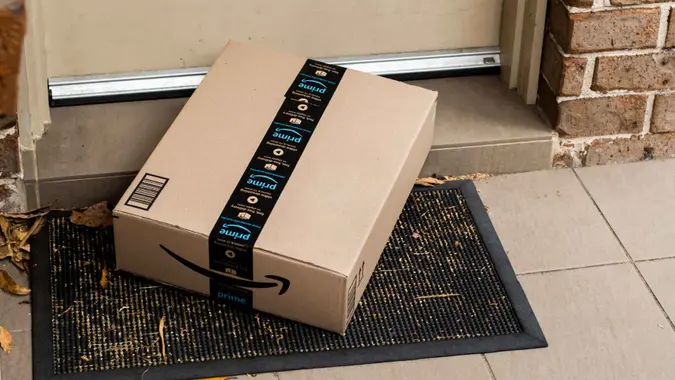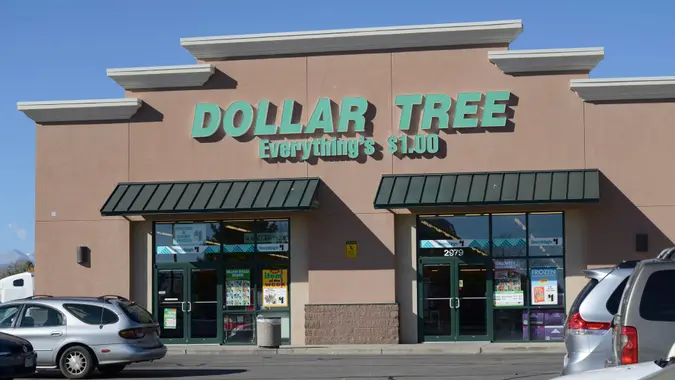Why the ‘3 Months’ Salary’ Rule for an Engagement Ring Doesn’t Work With Inflation — and What To Do Instead

Commitment to Our Readers
GOBankingRates' editorial team is committed to bringing you unbiased reviews and information. We use data-driven methodologies to evaluate financial products and services - our reviews and ratings are not influenced by advertisers. You can read more about our editorial guidelines and our products and services review methodology.

20 Years
Helping You Live Richer

Reviewed
by Experts

Trusted by
Millions of Readers
Most jewelers agree that the “three month’s salary” rule for an engagement ring no longer applies. This guideline would indicate that if you make $100,000 a year — barely enough to afford a house in most regions — you should pay $25,000 for an engagement ring. That’s a big rock that doesn’t give you a way to get to work, a place to sleep, or even make memories for your family that a vacation would!
The three month’s salary guideline, which recommended that people spend the equivalent of three month’s worth of their annual salary on an engagement ring, originated from a jeweler. “In today’s context, it doesn’t make much sense,” said Ankur Daga, CEO and co-founder of Angara, an online fine jewelry brand. “And, frankly, with the advent of lab-created diamonds, it’s not needed.”
Noting that there’s no longer a general or recommended guideline for the price of an engagement ring, Daga explained, “The average engagement ring spend in the U.S., historically, for the past decade has been around $6,000. It came down to $5,500 last year, and we expect it to come down to $5,000 [this year]. In a world where everything is getting more expensive, the average engagement ring is getting cheaper.”
In a study from the jeweler, the majority of women said that “affordability” is the number one criterion when they are shopping for an engagement ring.
“So now the budget is not really what’s in consideration, it’s what appeals to you as an individual,” Daga said. “It’s not about chasing that singular idea of perfection.”
With these new standards and options for jewelry, today’s couples can find, or create, a ring that matches their personality and style for the amount they are willing to spend.
Lab-Created Diamonds Allow Larger Stones for Less Money
For the first time in 2024, there were more lab-grown diamond engagement rings sold in the U.S. than natural diamonds. The Angara study revealed that 52% of Gen Z would prefer a larger, lab-created diamond than a smaller natural stone.
Lab-created stones are physically, visually, and chemically virtually identical to natural stones, Daga said. Only organizations like the Gemological Institute of America (GIA) can test for and identify a natural stone vs. a lab-created diamond due to the trace presence of nitrogen, a colorless gas, in natural diamonds.
Daga noted that buyers should be aware that lab-created diamonds are not investment pieces and may not hold their value, but they sell for roughly 10 times less than their natural counterparts. This cost savings can put someone’s dream engagement ring within their budget.
Gemstone Engagement Rings Grow in Popularity
Engagement rings have also dropped in price as more people embrace affordable color gemstones. The Angara survey found that 25% of people would choose a colored gemstone rather than a diamond as the centerstone of their engagement ring.
“We’re excited that people are expressing themselves, and buying what they want to buy, not what they’ve been told they should buy,” Daga said.
Buyers Splurge on Settings
As engagement ring stones drop in price, buyers are paying more attention to the setting. Daga said more customers are upgrading to platinum, although white gold remains the most popular choice. The industry has also made custom designs accessible and affordable to more customers.
In past centuries, jewelry was primarily the domain of the wealthy ruling class. Artisans would design a custom piece based on the customer’s vision and take months to craft it.
The advent of mass market jewelers commoditized jewelry sales while lowering prices to make jewelry a mainstream accessory. However, options for customization were limited.
Today, the internet makes it possible to have custom designs at affordable prices. “Jewelry should be a reflection of who you are and what you care about,” Daga said. “Now we’re finally able to go back to allowing the customer to choose. Technology enables us to provide a custom experience at scale.”
 Written by
Written by  Edited by
Edited by 
























